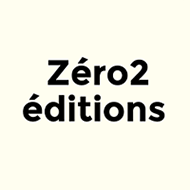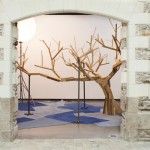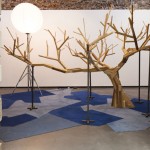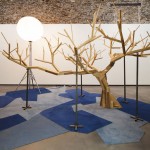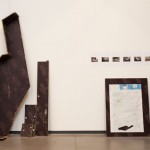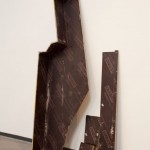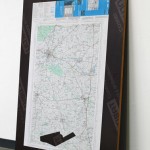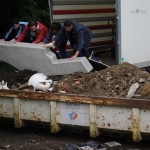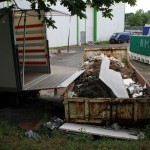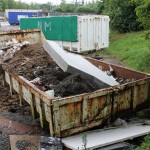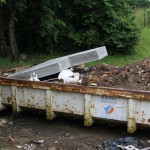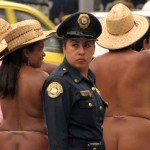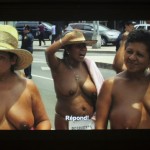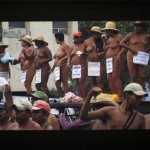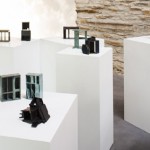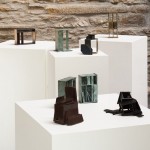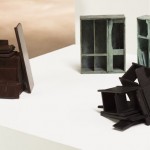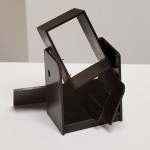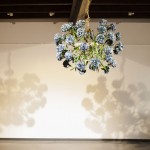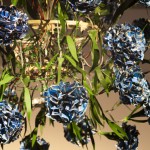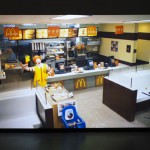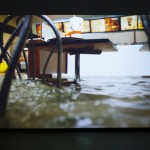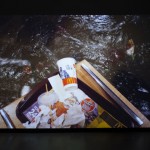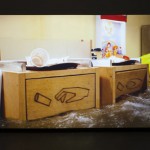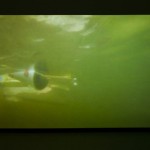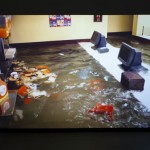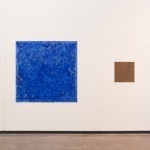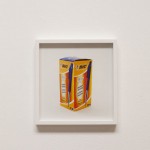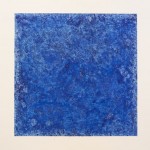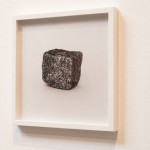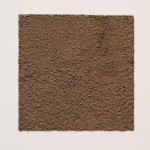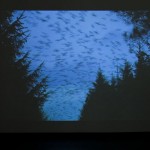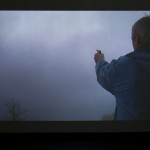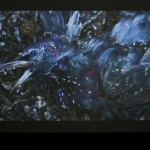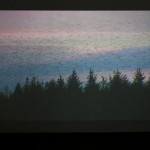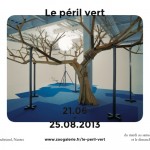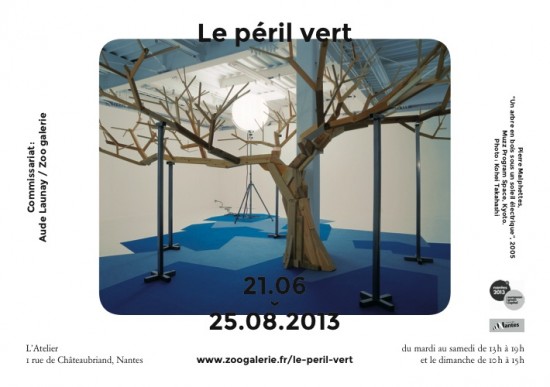 (Hors les murs) (scroll down for English text)
(Hors les murs) (scroll down for English text)
Le péril vert
Exposition à l’Atelier (1 rue de Chateaubriand, Nantes) dans le cadre de Nantes Capitale Verte 2013
du 21 juin au 25 août 2013
Scoli Acosta, Julien Berthier, Clarisse Hahn, A Kassen, Pierre Malphettes, Blaise Parmentier, Superflex, Marie Voignier.
Commissariat : Aude Launay / Zoo galerie
La question écologique parcourt l’art contemporain : du pionnier Gustav Metzger, créateur en 1959 de l’art auto-destructif, à la jeune Pamela Rosenkranz qui produit d’inquiétantes peintures sur couvertures de survie, en passant par Lara Almarcegui qui projette actuellement à la 55e biennale de Venise un diaporama saisissant sur une île-décharge située à quelques kilomètres seulement des pavillons nationaux, nombreux sont les artistes qui abordent frontalement le sujet. Cependant, penser une exposition dans le cadre imposé de l’attribution d’un label vert à la ville qui l’accueille exigeait peut-être une approche plus feutrée.
Si la fin du monde n’a pas eu lieu l’an passé, nous ne sommes pour autant pas délivrés de l’inquiétude qui nous a été offerte corrélativement à l’avènement de la modernité et de notre liberté. Cette inquiétude de l’homme sans dieu, remisé aux confins du cosmos car déchu de sa position centrale, s’incarne depuis en de multiples formes, du vitalisme au nihilisme, du progressisme au catastrophisme… jusqu’à se développer de plus en plus dans une éthique de la catastrophe qu’imposent aujourd’hui autant les politiciens que les économistes, les écologistes ou les gourous apocalyptiques. C’est bien souvent le terrain environnemental qui cristallise ces peurs — peut-être par facilité — de par son universalité. Il est désormais avéré que nous sommes en crise écologique globale, depuis dix, vingt, trente ans, c’est selon, mais que signifient réellement ces termes ? Pour certains, la crise écologique est avant tout une crise économique, pour d’autres, elle est d’abord métaphysique ; quand les premiers pensent y remédier par des accords tels que le protocole de Kyoto, les seconds cherchent à en déterminer l’origine dans nos modes de pensée.
« Le péril vert » est ainsi à entendre de deux manières, de prime abord contradictoires et pourtant conjointes : s’il semble acquis que la nature est mise en péril par l’homme — depuis la révolution industrielle de la fin du xviiie siècle pour les tenants de l’Anthropocène, depuis l’avènement de la mondialisation et plus particulièrement les années double zéro pour l’opinion la plus répandue — , il est non moins plausible de l’entendre comme une possible mise en péril de l’humanité. Néanmoins, il n’est pas question ici de nous soumettre à de quelconques projections anthropomorphes du type « Pleurons en cœur, la nature souffre par notre faute, nous devons tout faire pour la protéger » ou encore « Ayons peur, la nature va se venger de l’homme qui la martyrise » ; il n’est utile ni d’en faire un sujet pensant, ni d’en faire un objet souffrant pour comprendre les enjeux de nos rapports à elle. Il semble avant tout urgent de réviser notre imaginaire pour cesser de la penser de manière binaire et idéalisée.
« Le péril vert » réunit donc des artistes pour lesquels l’écologie — au sens premier d’étude des relations entre les êtres vivants et leur milieu — constitue une interrogation cruciale, qu’ils dévoilent la fragilité paradoxale des êtres ou qu’ils formalisent sous des dehors colorés la crainte rampante d’un avenir par essence incertain, qu’ils soient fondamentalement engagés ou qu’ils cherchent les failles de la bien-pensance à tendance verte. Deux orientations se mêlent dans l’exposition : des œuvres qui, sous des dehors « réalistes », voire documentaires, ouvrent un espace fictionnel qui a d’ailleurs beaucoup à voir avec la question de la défense d’un territoire (celle de Marie Voignier avec la réminiscence hitchcockienne que ne manquent pas de créer les nuées noires d’étourneaux qui tourbillonnent à l’écran ; celle de Clarisse Hahn dont la nudité des héros transforme la manifestation en une sorte d’étrange parade ; le film de Superflex qui donne à la catastrophe une dimension éminemment contemplative ou encore le projet de Blaise Parmentier qui transmue les données cartographiques en sculpture), en côtoient d’autres qui, sous un abord plus distancié au réel, pointent paradoxalement des questions très précises (le lustre à énergie solaire de Scoli Acosta, les déchets esthétisés de Julien Berthier, les « recyclages inutiles » d’A Kassen ou le paysage reconstitué de Pierre Malphettes). De quoi donner du grain à moudre à nos consciences citoyennes.
THE GREEN PERIL
At L’Atelier, Nantes, from 20 June to 25 August 2013
As part of Nantes Capitale Verte 2013
Curated by: Aude Launay/ Zoo Galerie
Ecological issues permeate contemporary art—from the pioneering Gustav Metzger, creator in 1959 of self-destructive art, to the young Pamela Rosenkranz, who produces disconcerting paintings on survival blankets, by way of Lara Almarcegui who, at the 55th Venice Biennale, is currently screening a striking slide-show about an island made of rubble located just a mile or two from the national pavilions, many an artist has broached the topic head-on. However, devising an exhibition within the framework imposed by the attribution of a green label to the host city possibly called for a more muffled approach.
The end of the world did not happen last year, but, for all that, we are not free of the anxiety offered us, in a correlative way, by the advent of modernity and our freedom. This anxiety of godless man, put away on the confines of the cosmos, because his central position has been dethroned, has since been incarnated in many different forms, ranging from vitalism to nihilism, and from progressivism to catastrophism… To the point of being increasingly developed within an ethic of catastrophe nowadays being dictated by both politicians and economists, ecologists and apocalyptic gurus. It is frequently the environmental terrain that crystallizes these fears, perhaps in a facile way, through its universality. It is now reckoned that we are in a state of global ecological crisis, and have been for ten, twenty, thirty years, depending on your fix, but what is really meant by these words? For some, the ecological crisis is, above all, an economic crisis; for others, it is first and foremost metaphysical. When the former think that they can put things right through agreements like the Kyoto protocol, the latter seek to define its origins in the ways we think about things.
So « The Green Peril » should be understood in two ways: at first glance contradictory, and then linked. If it seems to be a given that nature is being endangered by man—since the Industrial Revolution in the late 18th century for the advocates of the Anthropocene, and since the advent of globalization, and more particularly the first decade of the 21st century, for more widespread opinion—, it is no less plausible to see it as a possible endangerment of humanity. It is nevertheless not a question here of submitting to any old anthropomorphic projections of the type “Let us weep in our hearts, nature is suffering because of us, we must do all we can to protect her”, and “Let us be afraid, nature will have her revenge on man who ill-treats her”; it is not useful either to make her a thinking subject, or a suffering object to understand the challenges of our relation to her. Above all, it seems urgent to review our imagination so as to stop thinking in a binary, idealized way.
« The Green Peril » thus brings together artists for whom ecology—in the primary sense of the study of the relations between living beings and their environment—represents a crucial questioning, whether they reveal the paradoxical fragility between beings, or whether, under colourful appearances, they formalize the creeping fear of an essentially uncertain future, whether they are fundamentally involved or whether they are looking for the flaws in green-oriented conservatism. Two orientations overlap in the exhibition: works which, under “realistic”, or even documentary appearances, open up a fictional space which, furthermore, has a great deal to do with the issue of the defence of a territory (that of Marie Voignier with the Hitchcockian reminiscence that is unfailingly created by the dark clouds of starlings wheeling about on the screen; that of Clarisse Hahn whose naked heroes transform the demonstration into a sort of strange parade; the Superflex film which lends catastrophe an eminently contemplative dimension, and Blaise Parmentier’s project which turns cartographic data into sculpture),and works which, from an angle that is far more removed from reality, paradoxically broach very precise issues (Scoli Acosta’s solar-powered chandelier, Julien-Berthier’s aestheticized waste, A Kassen’s “useless recycling”, and Pierre Maphettes’s recreated landscape. A little grist to the mill of our denizen’s consciences.

